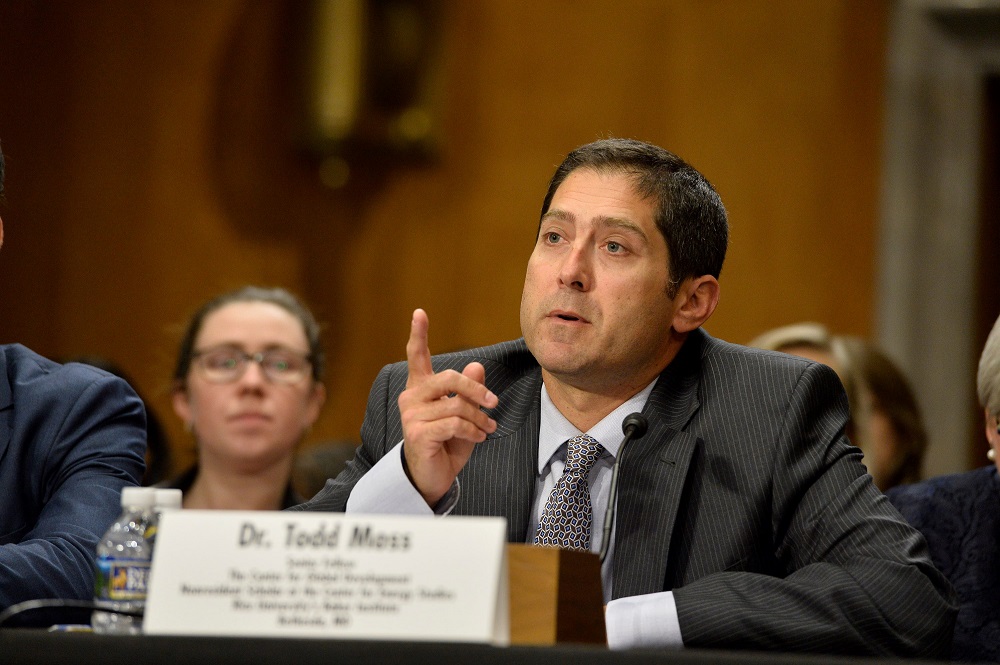Ethiopia is facing one of the worst droughts in decades, a painful reminder that food security challenges remain despite low food prices globally. Feed the Future—the Obama Administration’s global food security initiative—has been supporting Ethiopia and 18 other focus countries with projects that aim to boost farmer productivity and improve nutrition. Since its launch in 2010, Feed the Future has invested $1 billion each year in these 19 focus countries, as well as in support for agricultural research and development and other cross-cutting activities that address food insecurity. How has the initiative performed in its first five years?
Given impact data is just beginning to become available, we take a preliminary cut at that question in a new CGD Policy Paper. Most poor people around the world live in rural areas and agriculture contributes significantly to their meager incomes. So we broadly agree with Feed the Future’s focus on strengthening agriculture and improving nutrition as key pathways to alleviate poverty and improve food security.
When the Obama administration unveiled Feed the Future, it promised the initiative would employ a new approach to global food security built on principles of aid effectiveness. The initiative has succeeded in targeting resources to 19 focus countries that have high levels of need, demonstrate commitment to strengthening their agricultural sectors, and score above average on several institutional quality measures for their income level. In addition, each focus country has a concrete Feed the Future strategy aligned with country priorities, improving odds that changes on the ground will stick.
But when it comes to prioritizing other key elements of aid effectiveness, particularly transparency and country ownership, the initiative has, so far, come up short. Data specific to the initiative remains limited, making it difficult to track how the money is being spent. And Feed the Future is below the USAID average of funds directed to local actors, despite early assurances of a strong push for broad country ownership. As a result, the initiative’s approach to delivering aid doesn’t appear as innovative as initially advertised.
With the aim of seeing Feed the Future build on and sustain early gains we offer six practical recommendations. If implemented, these recommendations would contribute to a strong and lasting US commitment to global food security informed by principles intended to improve both the quality of aid and its impact.
Recommendations for Congress
1. Authorize Feed the Future. This would sustain investments and keep agriculture in the development spotlight. And moving away from the whole-of-government approach and designating USAID to lead implementation would increase accountability for the initiative’s performance.
2. Use authorizing legislation to increase support for institution building in focus countries. Only a small share of investments are channeled through country systems. Giving agencies more flexibility to direct funding to local actors like governments, civil society, and private sector organizations would promote country ownership.
3. Authorize the continuation of GAFSP. As an important multilateral component of Feed the Future, GAFSP helps leverage resources from other donors. But better coordination is also needed in countries where both GAFSP and Feed the Future operate.
Recommendations for the administration
4. Feed the Future should not expand to new focus countries. The initiative is committed to rigorously evaluating its investments. But results from impact evaluations and cost-effectiveness studies are only just becoming available. For now, the initiative should focus on better understanding what types of interventions work (and do not) in current focus countries.
5. Feed the Future should explain what it is doing to sustain results. Considering the initiative’s budget is unlikely to grow and activities will not continue indefinitely, the initiative should report on how it is ensuring results will have long-term impact.
6. USAID should increase transparency of investments and their results. To paraphrase our colleague, you cannot monitor what you do not track and you cannot evaluate impact without a counterfactual. It is impossible to link US funding for agriculture and nutrition to specific Feed the Future activities. Tracking where investments are allocated is an essential first step in monitoring progress. We commend the initiative’s efforts to report annually on its progress. But as we have previously argued here, reporting impact data with a counterfactual helps understand the initiative’s contribution to reducing poverty and improving nutrition.
These practical recommendations would contribute to making Feed the Future a genuinely new approach to food security and poverty alleviation. We urge Congress and the administration to leverage this opportunity to include reforms that ensure Feed the Future delivers attributable impact going forward.
Disclaimer
CGD blog posts reflect the views of the authors, drawing on prior research and experience in their areas of expertise. CGD is a nonpartisan, independent organization and does not take institutional positions.




